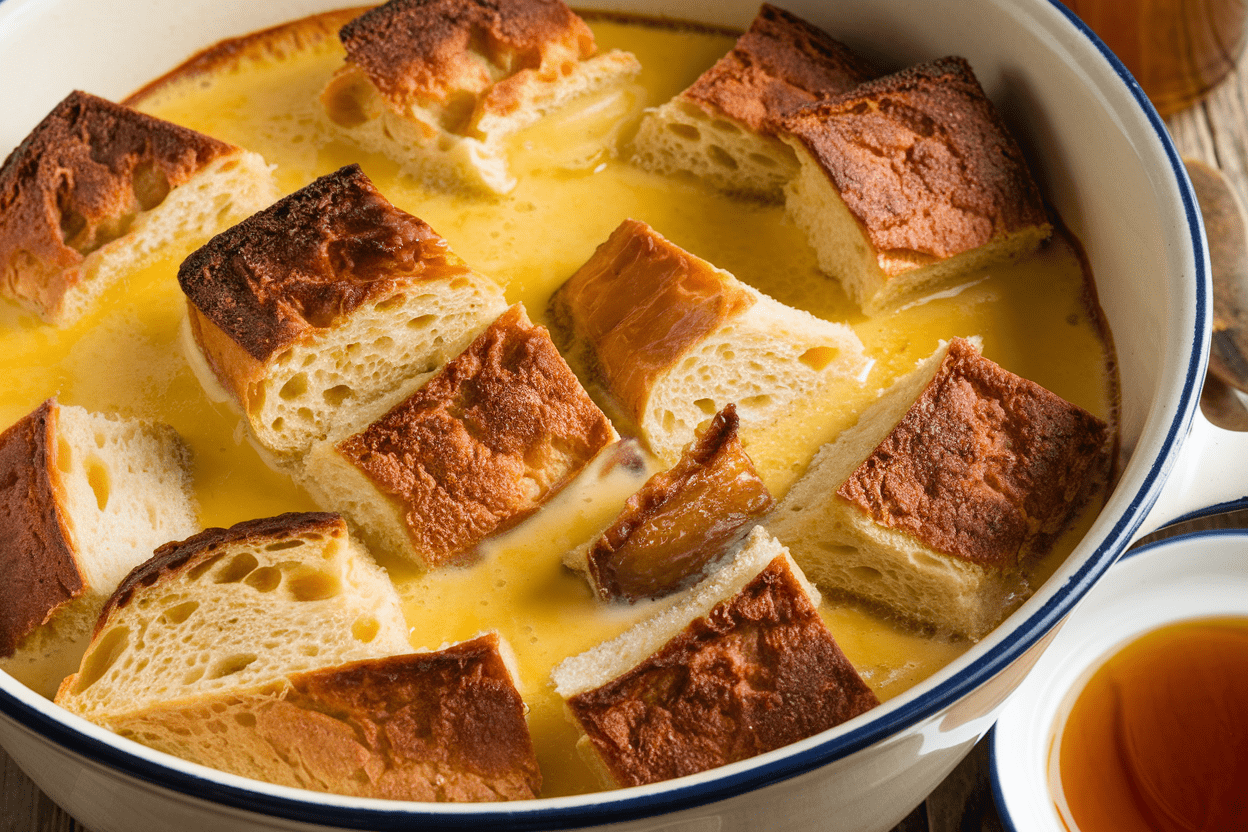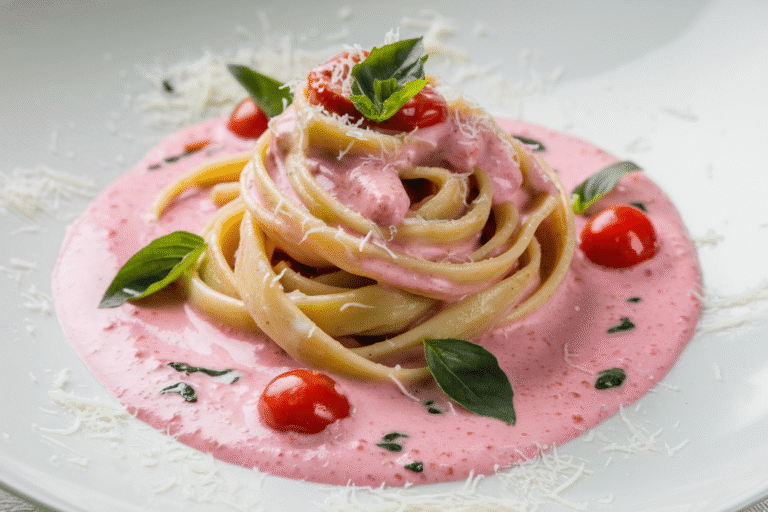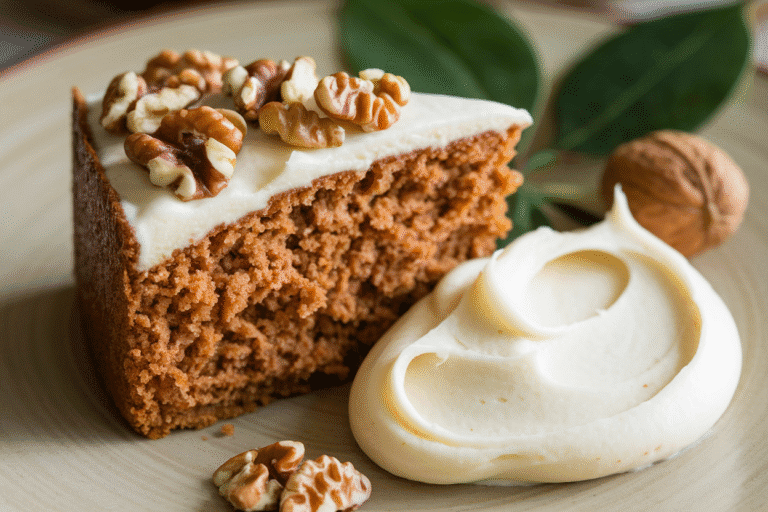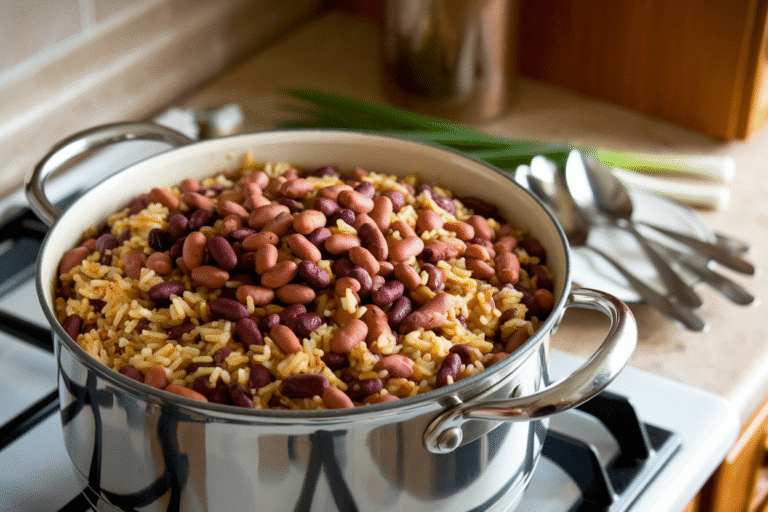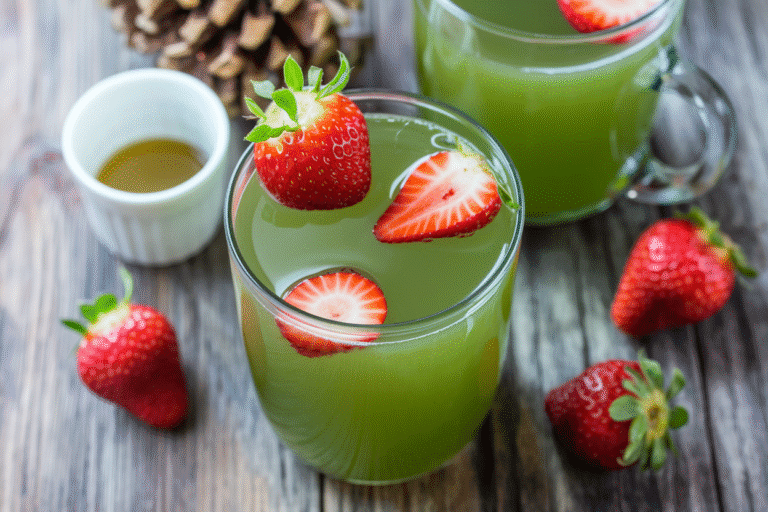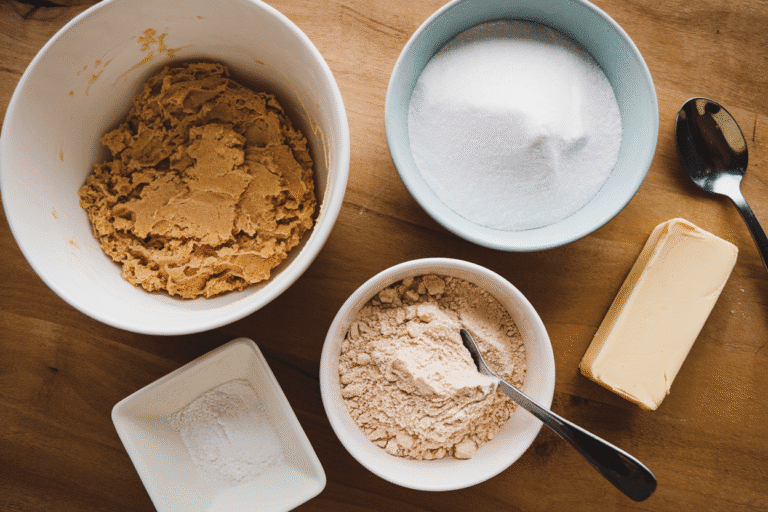Old-School Comfort, Zero Fluff: The Bread Pudding Recipe Old Fashion Fans Swear By
A pan of old-fashioned bread pudding is the culinary version of finding cash in an old coat—unexpected, nostalgic, and ridiculously satisfying. You don’t need a culinary degree, a stand mixer, or a trust fund of ingredients. Just stale bread, a few fridge staples, and heat.
This is the kind of dessert that turns “meh” leftover bread into a Sunday-level celebration. Want a dessert that hugs back? You just found it.
Why You’ll Love This Recipe
- Budget-friendly and simple: Uses basic ingredients you probably already have.
- Deeply nostalgic: Classic custard-soaked bread with vanilla, cinnamon, and buttery edges—Grandma would nod in approval.
- Texture perfection: Custardy center, crisp top—like a crème brûlée’s humble cousin.
- Flexible: Works with nearly any bread and welcomes add-ins like raisins, bourbon, or chocolate chips.
- Make-ahead friendly: Assemble ahead, bake later.
Your future self will thank you.
Ingredients Breakdown
- 8 cups day-old bread (brioche, challah, French bread, or sturdy white; cut into 1-inch cubes)
- 4 large eggs
- 2 cups whole milk
- 1 cup heavy cream (can sub half-and-half in a pinch)
- 3/4 to 1 cup granulated sugar (adjust to sweetness preference)
- 1/4 cup unsalted butter, melted (plus extra for greasing)
- 2 teaspoons pure vanilla extract
- 1 to 1.5 teaspoons ground cinnamon
- 1/4 teaspoon ground nutmeg (freshly grated if you’re feeling fancy)
- 1/4 teaspoon fine sea salt
- 1/2 to 3/4 cup raisins or golden raisins (optional but classic)
- 1–2 tablespoons bourbon or dark rum (optional, for soaking raisins)
- For the pan: Butter for greasing and a bit of turbinado sugar to dust (optional crunch)
- For serving: Warm vanilla sauce, custard sauce, or whipped cream (optional, but highly recommended)
Cooking Instructions
- Prep the raisins (optional but worth it): If using, soak raisins in bourbon or hot water for 15 minutes, then drain.
- Heat the oven: Preheat to 350°F (175°C). Butter a 9×13-inch baking dish generously. Dust with turbinado sugar if you crave a caramelized edge.
- Dry the bread: If your bread isn’t stale, spread cubes on a sheet pan and bake for 8–10 minutes to dry slightly.
Don’t toast them; just dehydrate a bit.
- Make the custard: In a large bowl, whisk eggs, sugar, milk, cream, vanilla, cinnamon, nutmeg, and salt until smooth. Whisk in the melted butter.
- Combine: Add bread cubes to the custard and gently fold until every piece is soaked. Toss in raisins.
Let sit for 10–15 minutes so the bread drinks up the custard. Stir once halfway.
- Transfer and level: Pour the mixture into the prepared baking dish. Press lightly with a spatula to even the surface and submerge any stubborn floaters.
- Optional water bath (for extra silky custard): Place the dish inside a larger pan and pour hot water around it to reach halfway up the sides.
Not mandatory, but it’s a chef’s cheat code.
- Bake: Bake uncovered for 40–50 minutes until the top is golden and slightly crisp, and a knife inserted near the center comes out with custard but not liquid. The center should jiggle like set Jell-O, not slosh like soup.
- Rest: Cool for 10–15 minutes before serving. This helps the custard finish setting and saves your tongue from instant regret.
- Serve: Spoon warm pudding into bowls.
Add vanilla sauce, a dusting of powdered sugar, or a scoop of vanilla ice cream if you’re in treat-yourself mode (which you are, obviously).
Storage Instructions
- Refrigerate: Cool completely, cover, and refrigerate for up to 4 days.
- Reheat: Warm individual portions in the microwave for 30–45 seconds or reheat the whole dish, covered with foil, at 300°F (150°C) for 15–20 minutes.
- Freeze: Wrap tightly in portions and freeze up to 2 months. Thaw overnight in the fridge and reheat gently. Note: the top stays great; the center gets softer (still delicious).
What’s Great About This
- Zero waste hero: Turns stale bread into dessert gold.
Sustainability never tasted so cozy.
- Familiar flavors, big payoff: Vanilla-cinnamon custard is universally loved. It’s the culinary equivalent of a warm blanket.
- Scales easily: Feeding two or twenty? Double or halve without drama.
- Works year-round: Serve warm in winter, room temp in summer, add seasonal fruit for flair.
Pitfalls to Watch Out For
- Using very fresh bread: Fresh bread won’t soak up enough custard, leading to soggy pockets.
Slightly dried is best.
- Skipping the rest time: Ten minutes in custard equals even texture. Don’t rush it—patience pays dividends.
- Overbaking: Custard hates overcooking. Pull it when it’s just set with a gentle jiggle.
Dry bread pudding is a crime, IMO.
- Too much liquid: If your bread is super soft (brioche, I’m looking at you), reduce milk by 1/4 cup or add a handful more bread.
- Blandness: Skimping on salt, vanilla, or spice leads to blah. Season boldly but smartly.
Variations You Can Try
- New Orleans style: Add 1 tablespoon bourbon to the custard and finish with a warm bourbon-butter sauce.
- Apple-cinnamon: Fold in 1.5 cups sautéed apples (butter + brown sugar + pinch of cinnamon). Cozy town.
- Chocolate chip: Swap 1/2 cup sugar for brown sugar and add 3/4 cup semisweet chips.
Decadent, not sorry.
- Orange-raisin: Add 1 tablespoon orange zest and 2 tablespoons orange juice; use golden raisins. Bright and elegant.
- Pecan praline: Sprinkle the top with chopped pecans and 2 tablespoons brown sugar before baking for a crunchy crown.
- Dairy-light: Use all half-and-half or a mix of milk and evaporated milk; still lush without heavy cream.
- Savory twist (not dessert): Skip sugar and vanilla; add cheddar, caramelized onions, herbs, and bacon. Bake as a strata.
FAQ
What kind of bread works best?
Brioche, challah, and French bread are MVPs thanks to their structure and flavor.
Day-old sandwich bread works too—just dry it a bit. Avoid super airy bread that collapses or very dense rye that overwhelms the custard.
Can I make it ahead?
Yes. Assemble up to 12 hours in advance, cover, and refrigerate.
Remove while the oven preheats, then bake. If the bread absorbed a ton of custard overnight, splash in 2–3 tablespoons milk before baking.
Do I need a water bath?
Not required, but it creates a silkier custard and protects the edges from overbrowning. If you’re going for perfection and have the patience, do it.
If not, just don’t overbake.
How do I know it’s done?
The center should jiggle slightly when you nudge the pan, and a knife near the center should come out with thick, custardy residue—not wet liquid. Typically 40–50 minutes at 350°F.
Can I reduce the sugar?
Absolutely. Go down to 1/2 cup for a lightly sweet version, especially if serving with a sweet sauce or ice cream.
The spices and vanilla will carry the flavor.
What sauce should I serve with it?
Classic options are vanilla custard sauce, bourbon-butter sauce, or a quick warm cream-and-vanilla drizzle. Even maple syrup does the trick when you’re in a hurry, FYI.
Is gluten-free bread okay?
Yes, but choose a sturdy loaf and dry it well. GF bread can be more fragile, so soak gently and avoid overmixing.
Can I add fresh fruit?
Yes—apples, pears, or berries work.
For juicy fruit like berries, toss with a teaspoon of cornstarch first to avoid excess moisture.
The Bottom Line
This bread pudding recipe old fashion delivers everything you want from a heritage dessert: thrift, comfort, and flavor that punches above its weight class. With a few pantry staples and a smart bake, you get creamy custard, caramelized edges, and that “just one more spoonful” energy. Keep it classic or make it your own—either way, this is old-school magic that never goes out of style.
